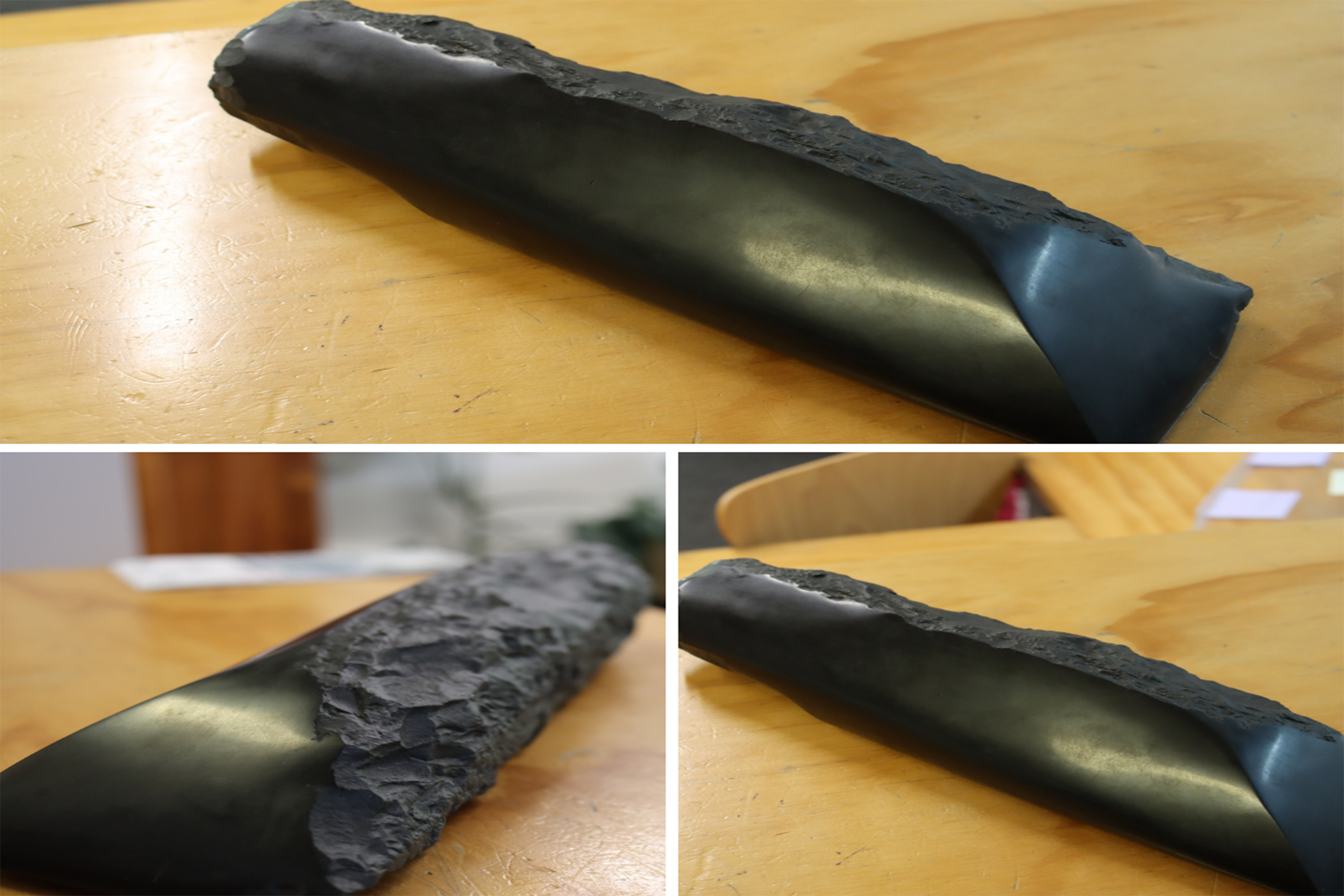A learner’s journey told through stone

Tutor Keri Takao says this significant piece tells the story of a learner’s journey.
“One side of the stone is rough and chipped—unworked on. The opposite side is smooth and glistening. This juxtaposition represents a student’s growth while studying at NMIT,” says Keri.
“When students arrive, they have yet to sharpen their skills and grow their knowledge, just like the rough side of the stone. As learners move through their studies, they grow and polish themselves, like the smooth side of the stone, and are prepared to enter the world and into employment,” he says.
When Frank Wells was a student in the early 2000s, Te Tari Māori (the Māori unit) changed its name to Te Toki Pakohe—a name that better represents the area and local iwi.
When Frank heard about the name change, he was inspired to act. A few months later, Frank summoned Keri to his home and bestowed the taonga on him.
The design is based on a toki or adze, which is what pakohe or argillite was used for traditionally.
Pakohe is a versatile stone, known for its strength and malleability and is of great significance to local iwi, especially Ngāti Kuia. The stone was used to make tools for building waka and houses.
This gave pakohe mana in the eyes of local Māori which is why today it is treated as a taonga (treasure).
Frank Wells helped revitalize Pakohe carving, which was an almost extinct cultural practice.
His works (touchstones) can be found at the Nelson Airport and the Suter Art Gallery Te Aratoi o Whakatū.

